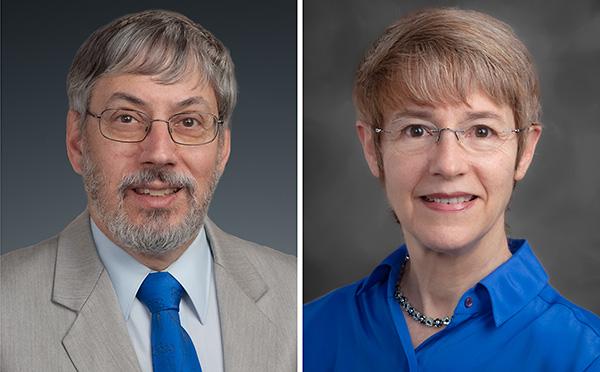
Sara Miller, PhD, professor in the Department of Pathology, was invited to give three talks at UltraPath XXI, the meeting of the Society for Ultrastructural Pathology (SUP) in Sydney, New South Wales Australia, from Sept. 30 through Oct. 4, 2024. She also chaired a session on infectious diseases. The first day of the conference was dedicated to a tutorial with basic training for residents, fellows, graduate students, and others wanting to strengthen their skills in electron microscopy. Miller’s presentation, titled “Virology Specimen Preparation Techniques and Identification of Viruses & Look-Alikes,” was on diagnostic virology–how to prepare specimens for examination by electron microscopy, how to recognize various types of viruses, and how to differentiate them from normal cell organelles that can be confused with viruses.
Miller also presented an update on the over 70 published articles mistaking normal cellular organelles for SARS Coronavirus-2. The talk was titled “Fake News–Rectifying Published Ultrastructural Misidentifications of Coronavirus”. In it, she demonstrated why knowledge of viral morphogenesis (how viruses are produced in cells) is paramount for correctly differentiating viral particles from similar looking organelles in uninfected cells. This talk was assisted by Hannah Bullock, PhD, of the CDC in Atlanta and Davis Ferreira, PhD, manager of the Center for Electron Microscopy and Nanoscale Technology (CEMNT), the biological core EM Lab in our Department of Pathology.
A third invited talk was on Tropical Viruses, in which Miller described many of the common viruses prevalent between the Tropic of Cancer and the Tropic of Capricorn. She made the point that because of global warming and copious air travel, these agents are spreading rapidly beyond the tropics, including to the United States, Canada, and Europe, as well as southward. Many of these pathogens are deadly or can leave incapacitating lifelong symptoms in survivors. Ebola and Lassa, both hemorrhagic fever viruses, are two of the commonly recognized agents. Oropouche and dengue, though not as deadly as the former, cause serious debilitating fevers, are rapidly spreading northward, and have been reported in the USA. Ferreira was a co-author of this presentation.
Miller has served as President of the SUP and has organized two of its biennial meetings. She has also served as President of the Microscopy Society of America (MSA) and as local arrangements chair for one of its meetings. Both the SUP and MSA are international microscopy organizations whose main missions are education and dissemination of diagnostic electron and light microscopy technology. Additionally, she is on the editorial board of the journals Microscopy Research and Technique and Ultrastructural Pathology.[JB1] Miller founded the Electron Microscopy Diagnostic Virology Laboratory and brought it to the Department of Pathology, and she directs the CEMNT [JB2] core, which brings together researchers at Duke and links (cements) them with other laboratories doing similar ultrastructural research. This facilitates many collaborations across campus.
David Howell, MD, PhD, Professor in the Department of Pathology also was invited to present two talks at UltraPath XXI. He also chaired a session on renal pathology.
In the first presentation, titled “Introduction to Monoclonal Gammopathy of Renal Significance (MGRS)/MRGS MonGRelS: Unusual Cases of Uncertain Breed,“ he provided an overview of the challenging field of MGRS (damage to the kidney caused by products of myeloma and B-cell lymphomas) and presented several particularly challenging and rare cases (“mongrels”) from his diagnostic experience.
The second talk, titled “Renal Transplant Pathology: An EM Potpourri,“ he presented a series of renal transplant biopsies in which electron microscopy was crucial in detecting and characterizing recurrent and de novo glomerular diseases, chronic forms of antibody-mediated rejection, and unusual infectious processes.
Howell has also served as President of the Society for Ultrastructural Pathology (SUP) and is currently President of the Renal Pathology Society. He is on the editorial board of the journal Ultrastructural Pathology. He is senior vice chair of our Department of Pathology and chair of the Pathology Appointments, Promotions, and Tenure (AP&T) Committee.